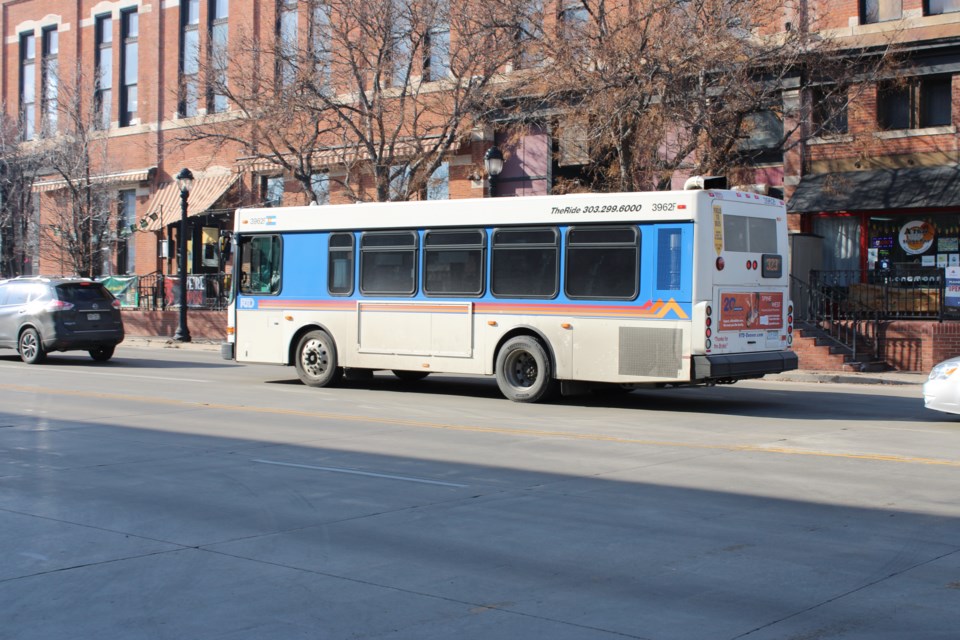With the Front Range poised to get free bus rides throughout the month of August, Longmont provides some insight into how removing fares can impact ridership and, by extension, improve air quality.
Vehicle exhaust is a major contributor to ground-level ozone, a pollutant formed when heat and sunlight allow the reaction of chemicals from cars, industrial plants, wildfire smoke and oil and gas extraction. Ozone pollution increases the risk for asthma, pneumonia, cardiovascular damage and other breathing issues.
Earlier this year, the U.S. Environmental Protection Agency proposed to reclassify the Denver Metro North Front Range area — which includes Boulder County and Longmont — from “serious” to “severe” for smog. The reclassification is based on data indicating that the region has failed to meet ozone standards.
Last month, Gov. Jared Polis signed into law an investment into fare-free promotions on transit systems meant to reduce traffic, which can reduce ozone. The Regional Transportation District is planning for a monthlong pilot of zero fares, pending approval from the Colorado Energy Office, according to Denverite.
The bill states that free transit has increased use in other communities, and the hope is that this will help rebuild ridership following the COVID-19 pandemic.
Longmont is one such community with free transit, with local bus routes 323, 324, 326 and 327 free for all riders. The city began offering the Longmont Ride Free Fare Program in July 2014.
According to data provided by Transportation Planning Manager Phil Greenwald, Longmont bus rides in August 2014 saw a 61% increase in the average number of weekday boardings compared to the same month of the previous year.
Up until the pandemic, local bus ridership continued seeing a gradual growth. In August 2019, Longmont Ride Free average weekday boardings reached 2,260 a day, up 142% from pre-free bus fares.
The COVID-19 shutdown led to a huge drop in ridership with businesses and the bus system closed for a few months, seeing an average of 826 average weekday boardings in September 2020.
In 2021, Longmont did see a decent rebound in ridership numbers, increasing 56% compared to the previous year and 38% more from the program’s start. This is despite the fact that a number of regional routes, like express buses to Denver and some services to Boulder, available before the pandemic have been canceled.
However, August 2021’s ridership was nearly 1,000 fewer people daily compared to August 2019. Assuming each of the 1,291 boardings was a different person — though the number of individual riders is likely lower — roughly 1.2% of the Longmont population used the bus on an average weekday in August of last year.
The regional nature of ozone as a pollutant also means that it is difficult to pare out exactly how much of an impact Longmont Ride Free has had on emissions. Regional efforts to reduce vehicle emissions along with other pollutants are required to improve air quality.
Notably, Colorado has previously attempted to improve air quality in the Denver metro area with free transit. For 12 months from 1978-79, RTD provided free rides on public transportation, except for during morning and afternoon rush hours, Colorado Public Radio reported.
A federally commissioned report on the experiment found that only about 12,000 bus trips a day were made by former drivers or auto passengers, too small of a change to be distinguishable from typical daily variations in driving patterns. The report concluded that a free transit program by itself does not appear to be an effective strategy to improve urban air quality.


